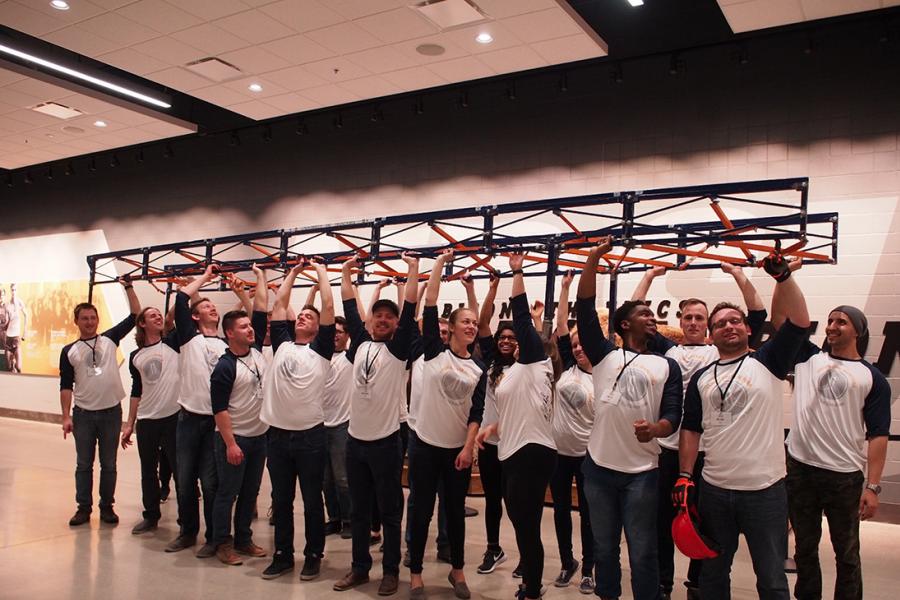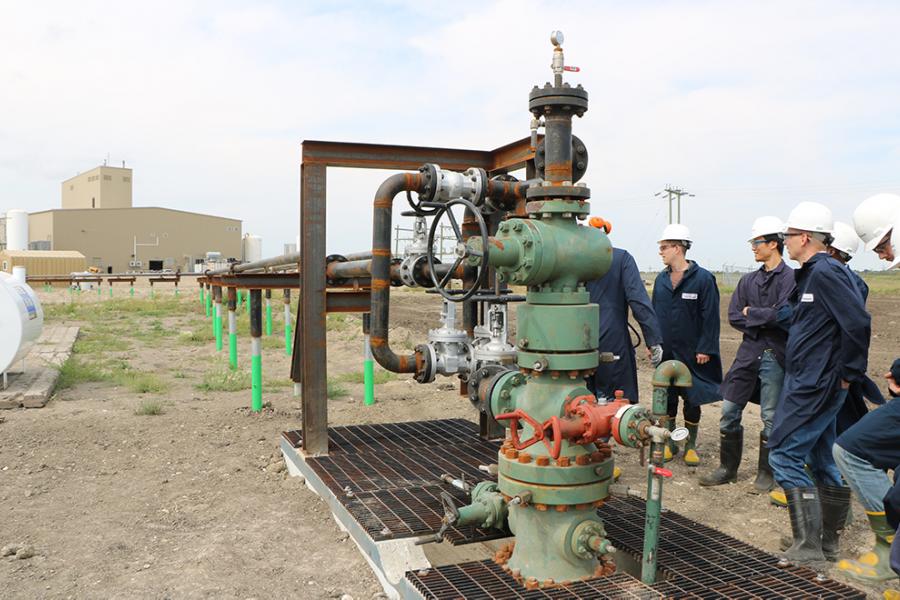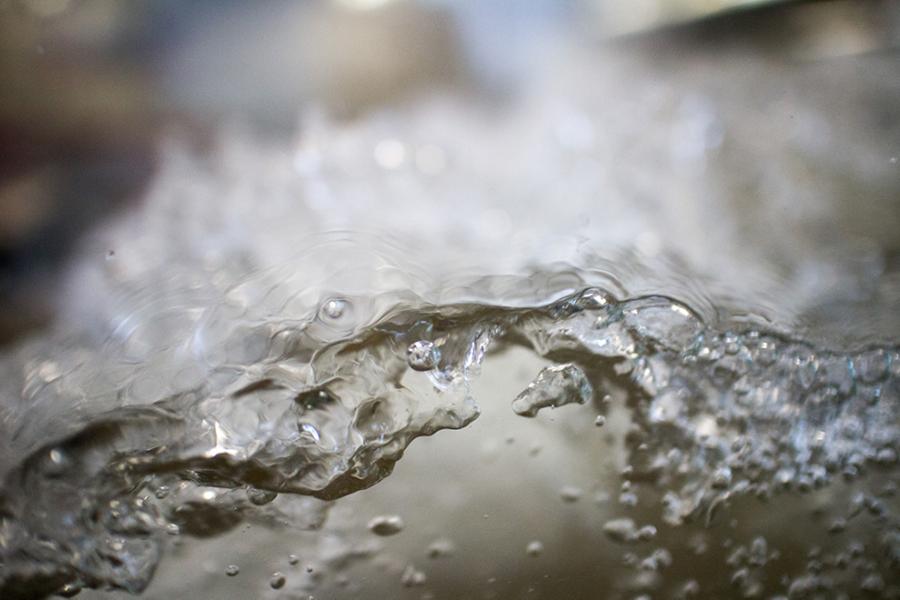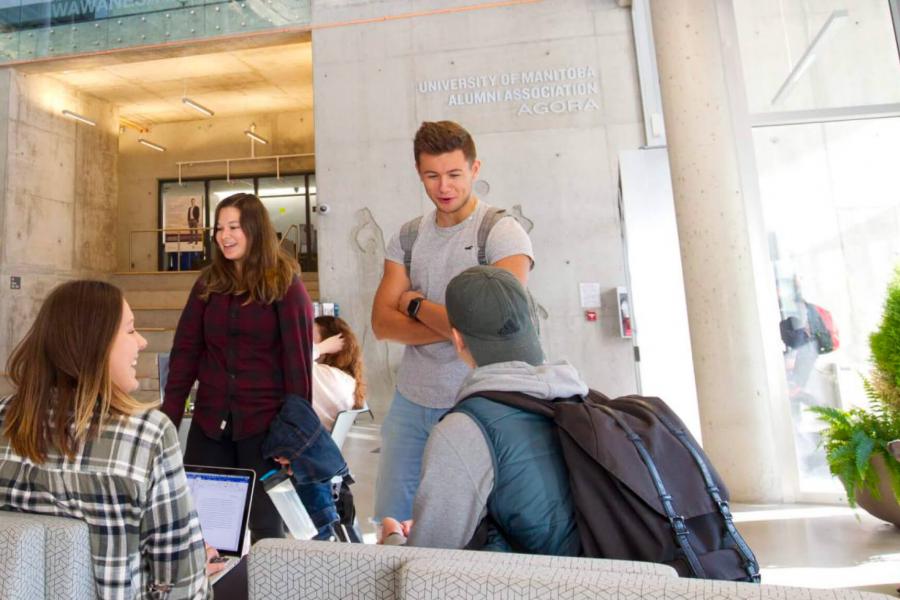Price Faculty of Engineering
Department of Civil Engineering
Civil engineers plan, design, build and maintain infrastructure such as roads, bridges, buildings, water and wastewater treatment facilities and dams. A civil engineer applies cutting edge technologies to protect the environment and improve the quality of human life.
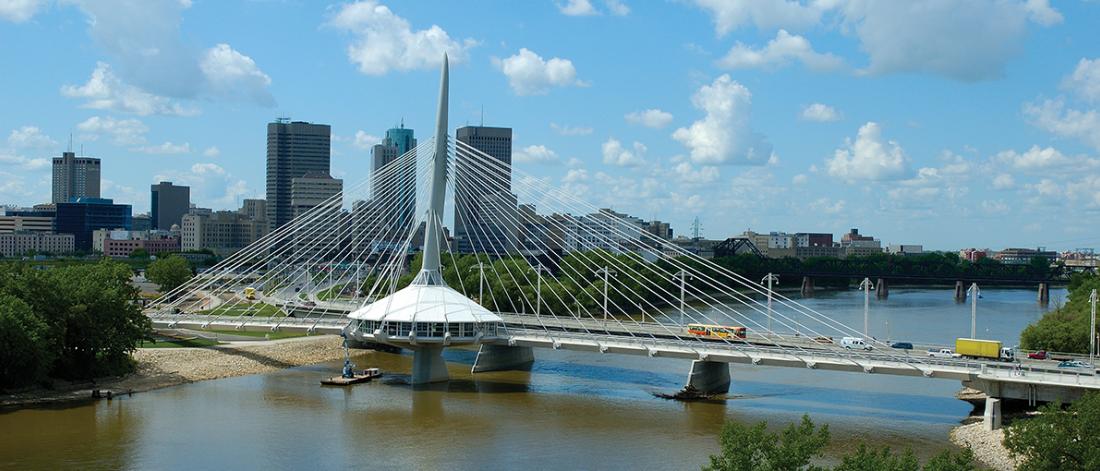
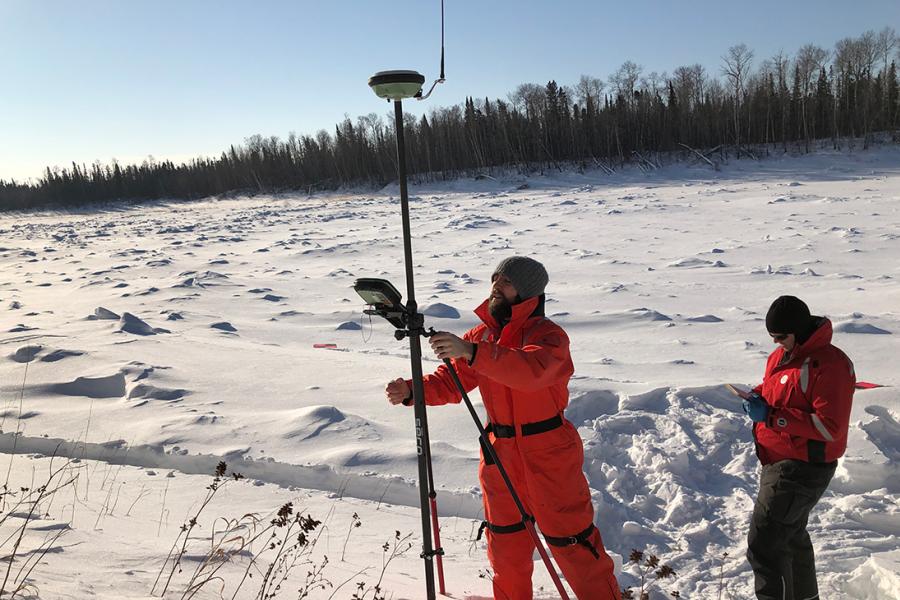
Study with us
In addition to basic sciences, the Civil Engineering program provides course work in design and implementation, and focuses on practical applications. The Civil Engineering program integrates design into many courses, especially with elective courses. Students have access to computer labs and well-equipped facilities such as the Hydraulics Research and Testing Laboratory. Students participate, and perform well in several technical society competitions, and have been successful in national scholarship and other competitions. There are opportunities for international development and community work, and civil engineers find long term employment in stable industries at the forefront of innovative applications of advanced technology.
Programs of study
The Department of Civil Engineering offers programs tailored to aspiring engineers, mid-career professionals and cutting-edge researchers.
Undergraduate student resources
As a Civil undergraduate student, you can take advantage of opportunities and supports from academic focus areas to student groups.
Graduate student resources
Civil engineering students can access opportunities, supports and resources from the Department of Civil Engineering, the Price Faculty of Engineering, the Faculty of Graduate Studies and UM.
-
Academic Calendar
Explore program requirements and detailed descriptions for required and elective courses throughout the civil engineering program.
-
Supplemental Regulations (PDF)
The Supplemental Regulations contain the formal academic regulations governing Faculty of Graduate Studies programs generally and the civil engineering program in particular.
Finding a graduate studies advisor
Before submitting an application for admission to the Faculty of Graduate Studies, you must first find a faculty advisor who will accept you into their research group. The advisor will initially review your academic background, research intent, previous experience and CV and may grant tentative acceptance into the program.
To find an advisor prior to application, you must contact a faculty member whose research area aligns with your own interests. Department of Civil Engineering faculty members, and links to their research areas, can be found on the faculty and staff page. Please contact faculty members by email, and include the following:
- A current CV including publications, posters and conference participation; honours, awards and acknowledgements; and jobs pertaining to the field
- Copies of all post-secondary transcripts
- A one-page statement of research intent summarizing your proposed research project. If you have several research interests, please customize your statement for each faculty member you are interested in working with.
If you do not hear back in about eight weeks, that professor may not be interested in your application at this time.
Please note that tentative acceptance from an advisor does not guarantee admission into the program.
Research
Faculty and students in the Department of Civil Engineering conduct world-class research in the fields of construction, environmental, geotechnical, masonry and cementitious materials, structural, transportation, and water resources.
Environmental engineering
Research in Environmental Engineering encompasses three areas: water treatment, wastewater treatment and solid waste disposal and management. The work serves the vibrant communities in the Prairies with special challenges of advanced nutrient removal from water and wastewater, cold climate issues, water and wastewater treatment in remote locations, landfill bioreactor issues. Examples include particle analysis in water and wastewater, floc properties in dissolved air flotation, biological nutrient removal from wastewater and sludge liquor, novel biofilm membrane processes, biosolids processing and disinfection, anaerobic treatment processes, animal residue treatment, fermentation to generate carbon for biological phosphorus removal, clogging of leachate collecting pipes, and bioreactor landfills.
Research Facilities
The environmental engineering program and the new laboratory offer the latest in instruction and facilities for studying the physicochemical and biological transformation of pollutants in water, wastewater and solid waste. In particular, the program aims at developing the principles of reactor and process engineering for the treatment of water, industrial and municipal wastewater and solid waste. State-of-the-art analytical equipment includes, among other, high-performance liquid chromatographs with a variety of detectors, gas chromatographs, automated ion analyzers, atomic absorption spectrophotometer, carbon analyzer, and flow-injection nutrient analyzers. Our laboratories allow for bench-scale testing of various process conditions in three controlled temperature environmental chambers. Present research addresses, among others, nutrient removal and recovery, removal of endocrine-disrupting compounds, municipal solids and sludge utilization, optimization of water treatment processes, cold climate water and waste treatment and industrial waste processes.
Professors in Environmental Engineering
Dr. Beata Gorczyca, P.Eng.
Dr. Chengjin Wang, P.Eng.
Dr. Qiuyan Yuan, P.Eng.
Geotechnical engineering
Most engineering projects that come in contact with the earth require the expertise of geotechnical engineers. These projects include shallow and deep foundations for buildings, earth retaining structures such as basement walls and bridge abutments, road and railway construction, instabilities of hillsides and riverbanks, and engineered slopes such as earth dams, highway cuts, embankments, and dikes for flood protection.
In a larger sense, geotechnical engineering also includes a wide range of earth-related topics, for example, geo-environmental engineering, geological engineering, rock mechanics, mining engineering, geosynthetics, ground improvement, hydrogeology, and engineering in cold regions. A career in geotechnical engineering offers opportunities to combine field exploration, laboratory studies, computer analysis, engineering design, and travel.
Research
The geotechnical group is actively involved in laboratory testing, field-scale projects, and numerical modelling in topics that include soil mechanics and foundation engineering, geo-environmental engineering, geosynthetics, soil-structure interaction, groundwater hydrogeology and contaminant transport, ground improvement, and unsaturated soil mechanics.
Current projects include numerical modelling and analysis of instrumented road embankments on peat and degraded permafrost, small-scale deformation analysis of synthetic ‘see-through’ clay using lasers, evaluation of the erosional properties of riverbanks on Lake Agassiz clay, the impact of soil deformation on buried pipelines, probabilistic slope stability modelling based on spatial variability of soil properties, and groundwater modelling of nitrogen transport processes. Recent projects include analysis of sandbag dike performance, evaluation of design methods for rockfill dams, a full-scale field test on the performance of rockfill columns, and geosynthetic-reinforced slopes and embankments.
Facilities
The geotechnical laboratory supports small-scale physical modelling and tests for material properties. Equipment is available for grain size analysis, triaxial tests at high pressures and temperatures, hydraulic conductivity in flexible-wall cells with suction control, 1-D compression, direct shear (including tests in a large-scale direct shear/pull-out apparatus), thermal conductivity, and erosion measurement. Facilities are available for specialized testing involving biological and chemical composition in groundwater and soils. The laboratory houses two temperature-controlled chambers.
Professors in Geotechnical Engineering
Dr. Marolo Alfaro, P.Eng.
Dr. Jamie Bartz, P.Eng.
Dr. James Blatz, P.Eng.
Dr. Jim Graham, P.Eng. (Professor Emeritus)
Structural engineering
Research Activities
The Civil Engineering Department at the Price Faculty of Engineering is the administrative headquarters of SIMTReC - Centre for Structural Innovation and Monitoring Technologies Inc. The Centre is pioneering the use of advanced materials for civil structures. SIMTReC is focusing on the rehabilitation, repair, strengthening, and new construction using fibre-reinforced polymer (FRP) composites for civil structures, and on structural health monitoring using fibre optic sensor (FOS) technology. SIMTReC has wide and well-developed contacts with the construction industry and has spearheaded many field application projects, including a wide range of innovative concrete, steel, and wooden structures reinforced with FRP composites. This makes the University of Manitoba the destination for civil engineers, researchers, and manufacturers seeking knowledge and looking for innovation in infrastructure.
The response of structures subjected to a variety of monotonic and dynamic loads is investigated both experimentally and numerically.
Current research activities include:
- Corrosion-free concrete bridge decks
- Fatigue behaviour of concrete bridge deck slabs under various environmental conditions
- Structural health monitoring utilizing FOS and other types of sensors
- The effect of temperature on concrete reinforced/prestressed with fibre-reinforced polymers
- Serviceability of concrete reinforced/prestressed with FRPs
- Structural behaviour, long-term evaluation, and durability of FRP composites for concrete structures
- Development and durability of FOS for infrastructure applications
- Field implementation of FRP-reinforced concrete structures
- Strengthening of timber bridges
- Behaviour of cold-formed members and built-up girders
- Advanced composite materials for Transmission Poles
- Fatigue considerations in Power Transmission Lines
- Behaviour of fabric-formed concrete structural members
Research Facilities
The W.R. McQuade Structures Laboratory
The W.R. McQuade Structures Laboratory, which has approximately 450 m2 of floor area, was constructed in 2002. The laboratory is equipped with two closed-loop servo-hydraulic testing machines (1000 and 5000 kN), four 1000-kN capacity MTS actuators (one fully-dynamic and 3 quasi-static), several portable universal steel reaction frames, two 60 GPM pumps and controllers for the servo-controlled apparatus, and three state-of-the-art data-acquisition systems. This testing facility provides a system capable of loading full-scale prototypes and structural members under both static and dynamic loading in an infinitely variable format.
The structures laboratory also houses two large walk-in environmental chambers (2.2 m wide ×5.5 m long× 2.5 m high) on the strong floor area, one under a dedicated reaction frame with a 250 kN capacity actuator to enable simultaneous structural testing under varied environmental conditions with temperature variations between +40°C and -40°C.
The structures laboratory and its neighbouring rooms also contain several specialized laboratories including a durability laboratory designed to weather materials and simulate field conditions, an FRP manufacturing laboratory to manufacture the various structural shapes required for FRP structures, and a concrete and materials testing facility for small scale tests.
The McQuade Structures Laboratory is also serviced by two 10-ton overhead cranes and contains a diverse range of minor testing apparatus, including hydraulic jacks and load cells.
Structural Health Monitoring Support Centre
A major feature of our structural research facilities is the Structural Health Monitoring (SHM) Support Centre. The primary goal of that Centre is to evolve as a National Centre of expertise, with the collaboration of professors from Civil Engineering and Electrical and Computer Engineering, for providing technical support for SHM and Civionics technologies to civil engineering field projects across Canada. The collaboration of the Centre with the Department of Electrical and Computer Engineering involves the purchase of equipment for the Structures Laboratory, the development of a data management system for SHM projects; as well as the development of sensors, which can be used in monitoring applications.
Professors in Structural Engineering
Dr. Young-Jin Cha, P.Eng.
Dr. Ehab El-Salakawy, P.Eng.
Dr. Graziano Fiorillo, PhD
Dr. Aftab Mufti, P.Eng. (Professor Emeritus)
Dr. Dimos Polyzois, P.Eng. (Professor Emeritus)
Dr. Dagmar Svecova, P.Eng.
Transportation
Transportation engineering research at the Price Faculty of Engineering is conducted by two main groups: the University of Manitoba Transport Information Group (UMTIG) and the Pavement Research Group.
UMTIG is a national leader in research regarding freight transport systems, traffic engineering, and the design and operation of urban infrastructure for pedestrian accommodation. This research involves:
- Modelling and characterizing prairie and northern freight transport systems, analyzing freight flow and performance, and understanding impacts on road and rail infrastructure design and maintenance
- Managing and operating the Manitoba Highway Traffic Information System (MHTIS), Manitoba’s traffic monitoring program for provincial highways
- Accommodating the mobility and accessibility needs of pedestrians (particularly the elderly and people with impairments) through testing advanced monitoring technologies in various environmental conditions and designing and managing urban infrastructure to meet these needs safely and equitably
The Pavement Research Group focuses on design, material characterization, performance, rehabilitation and management of roads and airfields. The Pavements Laboratory is equipped to test asphalt binders, aggregates, asphalt and concrete mixtures and is capable of applying a range of thermal and moisture conditioning and ageing processes to simulate the effects of environment and time on constructed facilities. The group conducts field testing to collect distress surveys, road roughness, surface texture, surface characteristics and structural capacity. Recent research projects involved:
- 3D modelling of surface microtexture and macrotexture, and relating surface characteristics to friction and noise
- Characterization of asphalt concrete, subgrade and base layers to generate design inputs for the mechanistic-empirical pavement design software (Pavement-ME)
- Stabilization of base layers using asphalt emulsions for cold regions applications
- Laboratory and field performance of bituminous overlays containing recycled asphalt roofing shingles
- Evaluation of cementitious materials and construction processes for partial depth repair of concrete pavements
- Performance-based selection criteria for pavement joint sealants and crack fillers in cold climates
Professors in Transportation Engineering
Dr. Babak Mehran, P.Eng.
Dr. Jonathan Regehr, P.Eng.
Dr. Ahmed Shalaby, P.Eng.
Water resources
The Water Resources Engineering group in the Department of Civil Engineering at the University of Manitoba is nationally and internationally recognized for its research and innovations in the fields of Hydraulics, Hydrology, and Systems Analysis. A well-designed program of technical courses is offered each year to our graduate and senior undergraduate students to understand these fields of study from basic concepts to the state-of-the-art applications.
Our current research focus is to address a wide-rage of water issues in Canada and more specifically in the Prairies. In the field of Hydraulics, our group hosts the NSERC/Manitoba Hydro Industrial Research Chair in River Ice Engineering. We have one of the most advanced laboratories in Canada, the Hydraulics Research & Testing Facility (HRTF), where we build and test scaled physical models and conduct fundamental research. We also conduct field studies and advanced numerical modelling to better understand the hydrodynamics, river morphology and river ice processes of different water bodies in Manitoba. In the field of Hydrology, we are conducting research in advanced statistical methods for investigating drought frequency, climate trends, and climatic teleconnections in Canada. We are also developing watershed models of the Nelson River and Hudson Bay drainage basins, a watershed system that drains one third of the Canadian landmass. Our group also leads the development of Canadian regional isotope sampling networks and coupled isotope hydrologic modelling. In the field of Systems Analysis, these models are calibrated by means of optimization, sensitivity, and uncertainty tools to estimate the precipitation-runoff relationship in response to the current and past climate conditions and to quantify the uncertainty in the system’s response to the possible future climate conditions. Moreover, we are developing a decision support system for operating the hydropower generating river-reservoir system in Manitoba considering uncertainties in the system’s input variables.
NSERC/Manitoba Hydro Industrial Research Chair in River Ice Engineering
Manitoba Hydro's (MH) entire hydraulic system is affected by river ice processes for a significant portion of each year. These processes negatively impact the efficiency of the MH system and reduce potential revenues at a time that coincides with the peak annual energy demand of the Province. The overarching objective of this IRC program is to significantly improve our understanding of river ice processes, and to incorporate this new knowledge into a comprehensive river ice simulation program. This will allow MH to assess and mitigate the negative effects of river ice on their system. This research program involves six separate projects that include field work, laboratory experiments and numerical modelling of river ice processes. A team of researchers and collaborators from the University of Manitoba, Manitoba Hydro, Clarkson University and local consulting firms have been working on this program since 2014. Projects include studying and modelling the ice consolidation processes on the Lower Nelson and Dauphin Rivers, & evaluating the effects of hanging ice dams and ice jams on sediment transport and channel conveyance, measuring the turbulent flow characteristics of partial ice covers, and investigating freeze-up processes on the Red and Assiniboine Rivers as well as upstream of the Jenpeg Generating Station. The program will train 12 graduate students, 10 undergraduate students and at least two post-doctoral fellows.
Professors in Structural Engineering
Dr. Masoud Asadzadeh, P.Eng.
Dr. Shawn Clark, P.Eng.
Dr. Karen Dow, P.Eng.
Dr. Ricardo Mantilla
Dr. Chandra Rajulapati, P.Eng.
Construction engineering and management
Research in construction engineering and management encompasses four main areas:
- Building Information Modelling (BIM) and Virtual Design and Construction (VDC)
- Information Technology applications in construction
- Construction management
- Sustainability in construction
Building Information Modelling (BIM) and Virtual Design and Construction (VDC)
BIM is the digital representation of a building product and its processes. Research in this area looks at BIM and Virtual Construction applications in construction projects, and can include the following areas but are not limited to:
- BIM for design coordination
- 4D scheduling and planning, 5D cost planning, nD applications
- Virtual, Augmented, and Mixed Reality applications
- Digital twins
- Integration of data capture and tracking technologies with BIM
- As-built modelling of existing buildings and BIM in Facility Management
IT applications in construction
Research in this area focuses on the use of Information Technologies to support design, construction, and operations stages of buildings and infrastructure. Specific objectives can include the following, but are not limited to:
- Construction technology adoption and innovation
- Improving construction processes via automation and use of advanced technologies
- Automated monitoring of construction progress
- Safety and quality inspections using computer vision
- Remote supervision, inspection and approval of projects
Construction Management
Research in this area focuses on the management of construction projects in terms of cost, schedule, quality and safety. Specific objectives can include the following, but are not limited to:
- Information and communication management in construction projects
- Construction management, planning and scheduling of large-scale projects
- Facility management
Sustainability in Construction
Research in this area focuses on the whole life perspective and post-occupancy evaluation of green buildings. The objectives of this research can include the following, but are not limited to:
- Understanding the green building process and green building assessment tools
- Evaluating the environmental performance of green buildings, investigating occupant satisfaction and behaviour
- Evaluating the economic performance of existing green buildings
Professors in Construction Engineering and Management
Masonry and cementitious materials
The focus of this group is on cementitious materials science, structural design and behaviour of Masonry, and structural efficiency of Masonry and Reinforced Concrete structures.
Concrete and cementitious material research focus is on analyzing deterioration of concrete infrastructure under combined damage mechanisms (chemical, physical and structural), developing advanced cement-based composites/concretes for sensitive construction applications and severe exposures, performance testing of concrete, and applications of information technology in cementitious materials research.
Masonry research encompasses new masonry design and existing masonry structure rehabilitation. This research includes study of materials, design and construction of masonry members and structures. Research in new masonry design focuses on verifying and advancing various aspects of design and construction such as cold and hot weather masonry construction, determining effective modulus of elasticity, masonry firewall and effective building enclosures for load bearing and non-load bearing masonry systems. Research in existing masonry structure rehabilitation concentrates on the most effective methods and repair materials for restoration of existing masonry heritage structures such as Canadian Parliament Building.
The structural efficiency and structural optimization area focuses on discovering the most efficient path for stresses in structural members that would result in the reduction of materials and reduction of Carbon footprint of the structure. This field of research further advances the understanding of structural analysis and design to optimize the structural shape and function for a general or specific loading condition.
Professors in Concrete and Masonry Engineering
-
Our researchers
Learn about our faculty member breaking new ground in the fields of civil engineering.
-
Undergraduate research awards
Each summer, students have the opportunity to work alongside professors in their research labs.
-
Price Faculty of Engineering research
Explore the research underway throughout the faculty.
Community and partners
Contact us
Department of Civil Engineering
Room E1-368 EITC
15 Gillson Street
University of Manitoba (Fort Garry campus)
Winnipeg, MB, R3T 5V6, Canada

